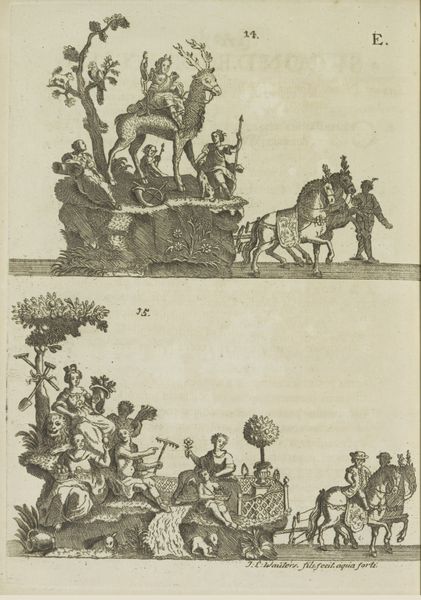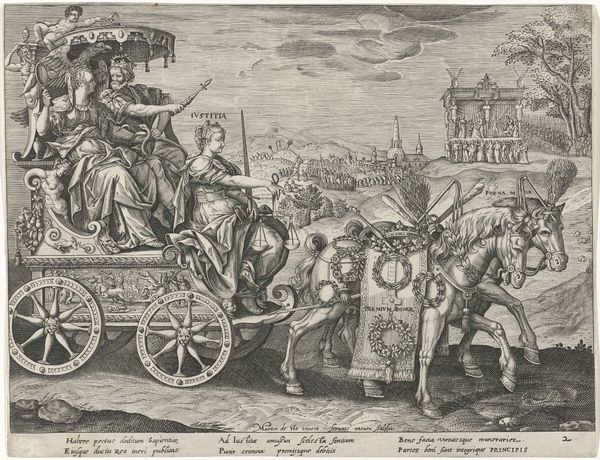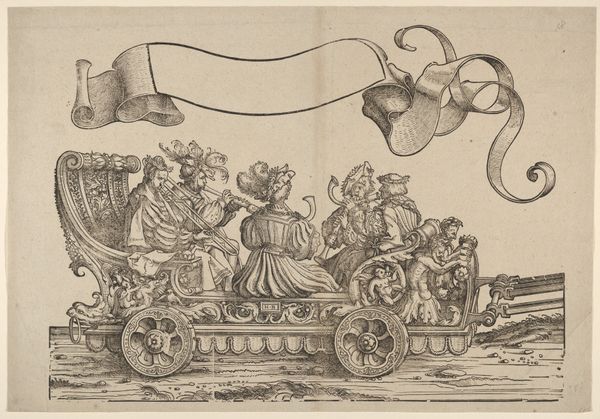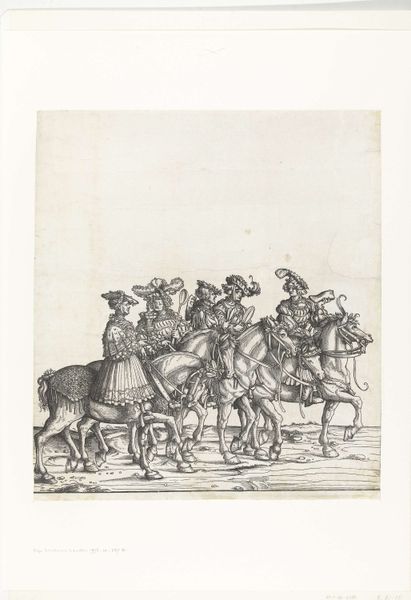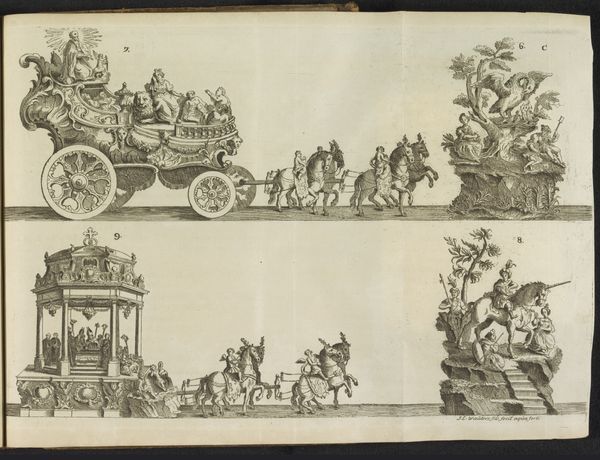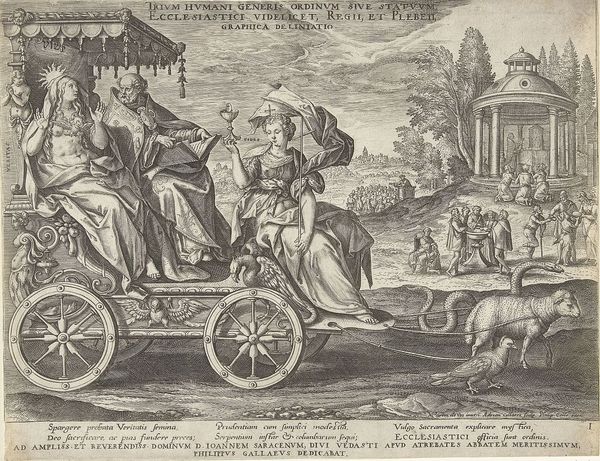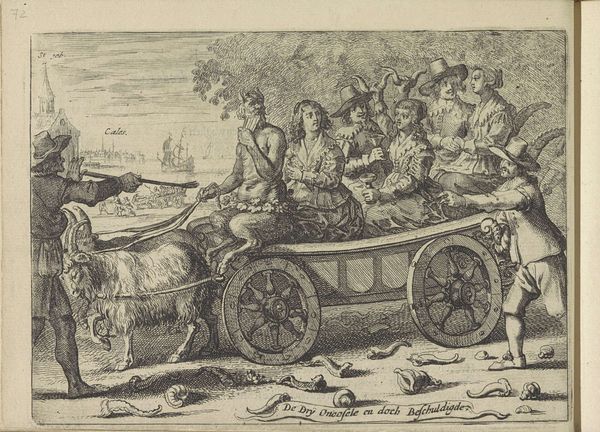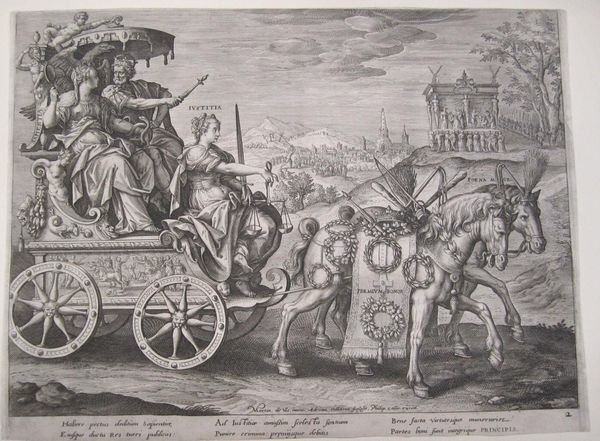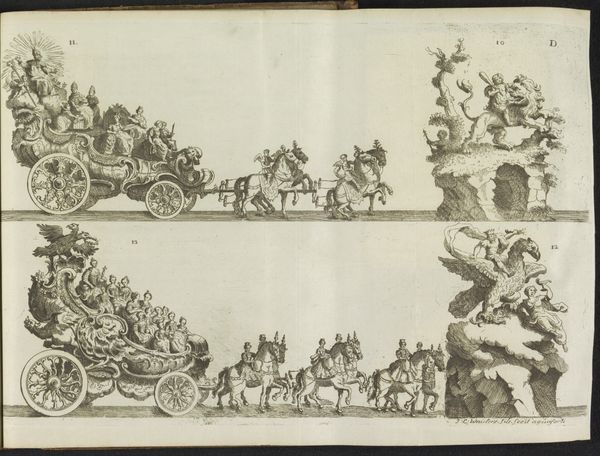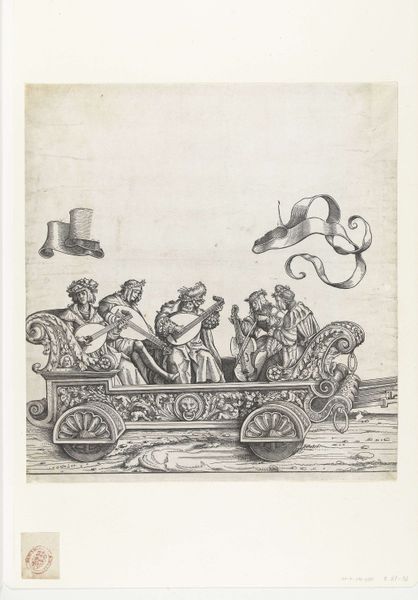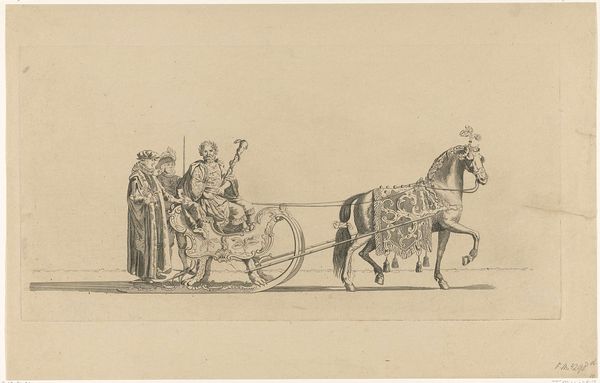
Dimensions: height 128 mm, width 175 mm
Copyright: Rijks Museum: Open Domain
Editor: So this is Pieter Wauters' "Blad O: vierentwintigste praalwagen," an engraving from 1767. It depicts an elaborate, multi-tiered carriage pulled by horses. There's something so theatrical about it. What do you see in this piece? Curator: Beyond the immediately striking visual spectacle, I see a powerful representation of hierarchical power structures at play in 18th-century society. This wasn't simply decorative; it performed social functions. Editor: Can you explain what kind of functions? Curator: Well, consider the very construction of the float, who it carries, and who pulls it. It presents a rigid visual metaphor of dominance and subservience. Think about who is elevated and adorned versus who is rendered as a mere mechanism for display. Do you think Wauters is merely depicting or perhaps subtly critiquing that societal hierarchy? Editor: That’s a really interesting question. I hadn't considered the potential for critique. It almost seems too celebratory and decorative for that. But I can see how the very excess could be interpreted as commentary on the inequalities of the time. Curator: Exactly. And the context of such a display is crucial. This isn't just any image of transportation; it’s a pageant wagon, designed to parade power publicly. So, what message would this send to the masses who observed it? It could solidify the existing power structures, or perhaps, inadvertently expose their artifice. Editor: I'm starting to see how much deeper the conversation around this image can go. What seemed like a simple decorative piece is loaded with potential social and political readings. Curator: Precisely. And that’s the ongoing project of art history: unveiling the intricate layers of meaning and power embedded within seemingly straightforward representations. Editor: Absolutely! It gives a lot to think about. Thank you.
Comments
No comments
Be the first to comment and join the conversation on the ultimate creative platform.
